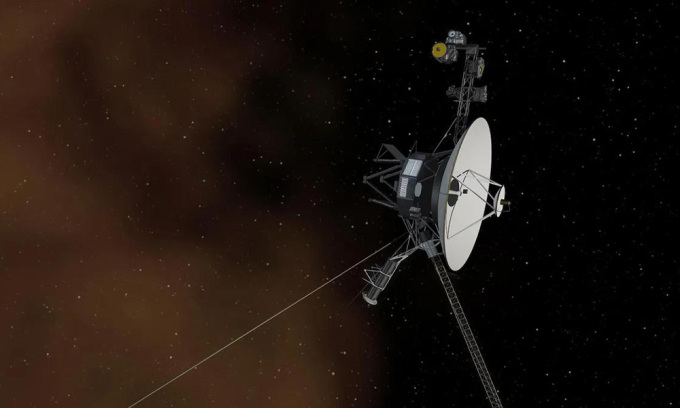Non-technical systems on the two Voyagers have been shut down in the hope of keeping the spacecraft operational until 2030, after which they will likely lose the ability to communicate with Earth.

Illustration of the Voyager spacecraft. Photo: NASA/JPL-Caltech
NASA's Voyager 1 and 2 spacecraft launched in 1977, just 16 days apart, with a designed lifespan of five years. The pair were tasked with studying Jupiter, Saturn, Uranus, Neptune and their respective moons.
But now, after nearly 46 years of operation, the two spacecraft have made history by venturing beyond the boundaries of the Sun’s sphere of influence. They continue to send back data from the interstellar medium—the mysterious space between stars. Despite occasional short interruptions, it seems their cosmic journey is far from over, Business Insider reported on August 4.
NASA designed the Voyager spacecraft to study the outer reaches of the Solar System. After completing their primary mission, they continued their exploration, making great journeys through the Milky Way and recording spectacular cosmic scenes.
On February 14, 1990, Voyager 1 took the "Pale Blue Dot" image from a distance of 6.4 billion kilometers. It is an iconic image and the most distant picture of Earth ever taken by any spacecraft.

The iconic "Pale Blue Dot" image was taken by Voyager 1 on February 14, 1990. Photo: NASA/JPL-Caltech
Over the past decade, Voyager 1 has explored interstellar space, a region filled with gas, dust, and charged particles. Voyager 2 arrived in 2018, six years after its twin. Their observations of interstellar gas have revolutionized astronomers' understanding of this mysterious region.
"It's amazing that both spacecraft are up and running, they've had some minor hiccups but they're still running great and sending back valuable data. They're still talking to us," said Suzanne Dodd, Voyager project manager at NASA's Jet Propulsion Laboratory (JPL).
About 23.8 billion kilometers from Earth, NASA's Voyager 1 spacecraft is hurtling through the dark interstellar medium. The spacecraft is the farthest man-made object from Earth. Because of its different orbits, Voyager 2 is now only about 19.8 billion kilometers from Earth.
In recent years, in an effort to control power, engineers have turned off non-technical systems on the two Voyagers, such as heaters for the scientific instruments, in the hope of keeping the spacecraft operational until 2030. After that, they will likely lose the ability to communicate with Earth.
But even after NASA shuts down its instruments and ends the Voyager mission, the pair will continue to wander through interstellar space. NASA says that in about 300 years, Voyager 1 will enter the Oort Cloud, a spherical region beyond Pluto’s orbit that contains billions of icy comets. It will take the spacecraft another 30,000 years to reach the end of the cloud and about 40,000 years to reach AC+79 3888, a star in the constellation Camelopardalis.
Meanwhile, in about 296,000 years, Voyager 2 will fly by Sirius, the brightest star in Earth's night sky. "The Voyagers are destined to wander, perhaps forever, through the Milky Way," NASA said.
Thu Thao (According to Business Insider )
Source link



































































































Comment (0)